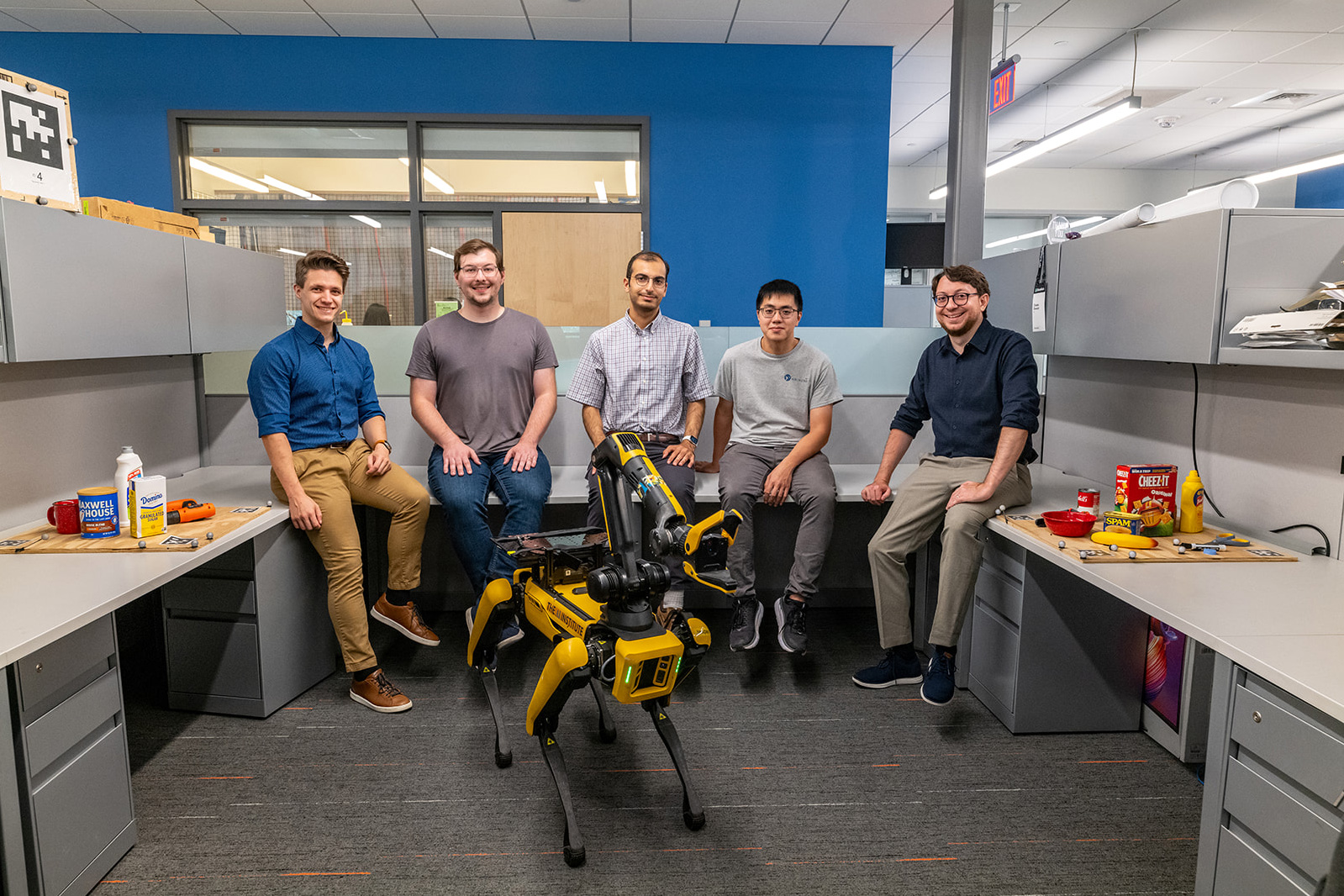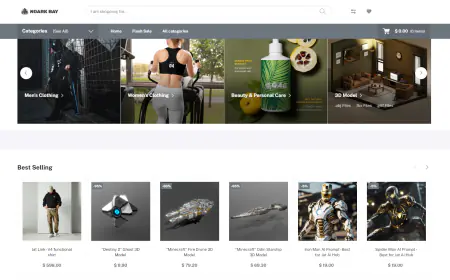AI Workforce: using AI and Drones to simplify infrastructure inspections
Inspecting wind turbines, power lines, 5G towers, and pipelines is a tough job. It’s often dangerous, time-consuming, and prone to human error. This post is the first in a three-part series exploring AI Workforce, the AWS AI-powered drone inspection system. In this post, we introduce the concept and key benefits. The second post dives into the AWS architecture that powers AI Workforce, and the third focuses on the drone setup and integration.

Inspecting wind turbines, power lines, 5G towers, and pipelines is a tough job. It’s often dangerous, time-consuming, and prone to human error. That’s why we at Amazon Web Services (AWS) are working on AI Workforce—a system that uses drones and AI to make these inspections safer, faster, and more accurate.
This post is the first in a three-part series exploring AI Workforce, the AWS AI-powered drone inspection system. In this post, we introduce the concept and key benefits. The second post dives into the AWS architecture that powers AI Workforce, and the third focuses on the drone setup and integration.
In the following sections, we explain how AI Workforce enables asset owners, maintenance teams, and operations managers in industries such as energy and telecommunications to enhance safety, reduce costs, and improve efficiency in infrastructure inspections.
Challenges with traditional inspections
Inspecting infrastructure using traditional methods is a challenge. You need trained people and specialized equipment, and you often must shut things down during inspection. As an example, climbing a wind turbine in bad weather for an inspection can be dangerous. Plus, even the best human inspector can miss things. This can lead to bigger problems down the line, costing time and money.
How AI Workforce helps
AI Workforce is designed to change all that. We use autonomous drones equipped with advanced sensors and AI to do the inspections. This brings the following benefits:
- Less risk for people – Drones do the dangerous work so people don’t have to. This makes inspections much safer.
- Faster and more efficient – Drones can cover a lot of ground quickly, getting the job done faster.
- Better data – Automated data collection and analysis means fewer mistakes and more consistent results. This allows for proactive maintenance.
What does AI Workforce look like in action? Users interact with a simple AI assistant and dashboard that displays near real-time drone inspections, detected issues, and AI-generated insights. The following figure shows an example of the user dashboard and drone conversation.
The following figure is an example of drone 4K footage.
Solution overview
AI Workforce is built on a robust and scalable architecture using a wide array of AWS services. Security is paramount, and we adhere to AWS best practices across the layers. This includes:
- Amazon API Gateway manages secure communication between various components, enforcing authentication and authorization
- AWS Identity and Access Management (IAM) roles and policies verify least privilege access, limiting each component’s permissions to only what is necessary
- Network security is implemented through virtual private clouds (VPCs), security groups, and network access control lists (ACLs), isolating the system and protecting it from unauthorized access
- For video processing, we employ secure transfer protocols and encryption at rest and in transit
AI Workforce provides a robust API for managing drone operations, including flight planning, telemetry data, and anomaly detection. The following diagram outlines how different components interact.
Imagine a system where drones autonomously inspect critical infrastructure, capturing high-resolution video, analyzing potential defects with AI, and seamlessly integrating findings into business workflows. The AI Workforce architecture brings this vision to life, using AWS services across four key pillars.
Control plane: Secure drone communication and operations
Our journey begins with automated drone flights. Each drone follows predefined routes, with flight waypoints, altitude, and speed configured through an AWS API, using coordinates stored in Amazon DynamoDB. Once airborne, AWS IoT Core enables secure, bidirectional communication—allowing drones to receive real-time commands (like “take-off”, “begin flight ID = xxx”, or “land”), adjust flight paths, and transmit telemetry data back to AWS. To maintain robust security, AWS Lambda responds to Internet of Things (IoT) events, enabling immediate actions based on drone data, while Amazon GuardDuty continuously monitors for anomalies or potential security threats, such as unusual API activity or unauthorized access attempts, helping protect the integrity of drone operations and promoting secure operations.
In AI Workforce, AWS IoT Core serves as the primary entry point for real-time drone communication, handling telemetry data, command and control messaging, and secure bidirectional communication with drones. API Gateway plays a complementary role by acting as the main entry point for external applications, dashboards, and enterprise integrations. It is responsible for managing RESTful API calls related to flight planning, retrieving inspection results, and interacting with backend services like Amazon Relational Database Service (Amazon RDS) and AWS Step Functions. While drones communicate directly with AWS IoT Core, user-facing applications and automation workflows rely on API Gateway to access structured data and trigger specific actions within the AI Workforce ecosystem.
AI/ML and generative AI: Computer vision and intelligent insights
As drones capture video footage, raw data is processed through AI-powered models running on Amazon Elastic Compute Cloud (Amazon EC2) instances. These computer vision models detect anomalies, classify damage types, and extract actionable insights—whether it’s spotting cracks on wind turbines or identifying corrosion on pipelines. Amazon SageMaker AI is at the core of our machine learning (ML) pipeline, training and deploying models for object detection, anomaly detection, and predictive maintenance.
We are also pioneering generative AI with Amazon Bedrock, enhancing our system’s intelligence. With natural language interactions, asset owners can ask questions like “What were the most critical defects detected last week?” and Amazon Bedrock generates structured reports based on inspection findings. It even aids in synthetic training data generation, refining our ML models for improved accuracy.
Data layer: Storing and managing inspection data
Every inspection generates vast amounts of data—high-resolution images, videos, and sensor readings. This information is securely stored in Amazon Simple Storage Service (Amazon S3), promoting durability and ease of access. Amazon S3 encrypts data at rest by default using server-side encryption (SSE), providing an additional layer of security without requiring manual configuration. Meanwhile, structured metadata and processed results are housed in Amazon RDS, enabling fast queries and integration with enterprise applications. Together, these services create a resilient data foundation, supporting both real-time analysis and historical trend monitoring.
Analytics and business: Automated workflows and business intelligence
Insights don’t stop at data collection—Step Functions orchestrates workflows that trigger automated actions. For example, if an AI model detects a critical defect, Step Functions can initiate a maintenance request in SAP, notify engineers, and schedule repairs without human intervention.
For deeper analysis, Amazon QuickSight transforms raw inspection data into interactive dashboards, helping asset owners track infrastructure health, spot trends, and optimize maintenance strategies. With a clear visual representation of defects, decision-makers can act swiftly, minimizing downtime and maximizing operational efficiency.
The future of AI Workforce: Expanding drone capabilities
Beyond inspections, AI Workforce provides a robust Drone API, offering seamless integration for third-party applications. This API enables remote flight planning, telemetry monitoring, and anomaly detection—all within a scalable AWS environment.
With secure drone communication, powerful AI-driven insights, a robust data foundation, and business automation, AI Workforce is redefining infrastructure inspection, making it smarter, faster, and more efficient than ever before.
Benefits and impact on business operations
The deployment of AI Workforce delivers a wide range of tangible benefits for organizations managing critical infrastructure (for example, automatically compare multiple inspections over time to detect longitudinal changes, and identify progressive failures for proactive maintenance), particularly in the energy and telco sector:
- Significant cost savings – By reducing the need for human labor, specialized equipment, and extensive logistical planning, AI Workforce can significantly lower inspection costs. Proactive maintenance based on early defect detection also prevents costly repairs and unplanned downtime.
- Dramatically enhanced safety – Removing human personnel from hazardous environments drastically reduces the risk of accidents and injuries, creating a safer working environment.
- Substantially improved efficiency – Automated drone inspections are significantly faster and more efficient than traditional methods, enabling more frequent inspections and faster turnaround times.
- Data-driven decision-making – AI Workforce provides asset owners with comprehensive and accurate data, enabling them to make informed decisions about maintenance, repairs, and asset management.
Example AI Workforce use case in the industry sector
Picture an energy company responsible for maintaining a large wind farm. They deploy AI Workforce drones for regular inspections. The drones, autonomously navigating preprogrammed flight paths defined by coordinates stored in DynamoDB and controlled through REST API calls, are securely connected using AWS IoT Core.
During the flight, sensor data is processed at the edge and streamed to Amazon S3, with metadata stored in Amazon RDS. Computer vision algorithms analyze the video in real time. If an anomaly is detected, a Lambda function triggers a Step Functions workflow, which in turn interacts with their SAP system to generate a maintenance work order. Inspection data is aggregated and visualized in QuickSight dashboards, providing a comprehensive overview of the wind farm’s health.
SageMaker AI models analyze the data, predicting potential failures and informing proactive maintenance strategies. In the future, Amazon Bedrock might provide summarized reports and generate synthetic data to further enhance the system’s capabilities.
Conclusion
At AWS, we’re committed to driving innovation in AI-powered solutions for a wide range of industries. AI Workforce is a prime example of how we’re using cutting-edge technologies to transform how critical infrastructure is managed and maintained.
We’re building this workforce to help businesses operate more efficiently and safely. We’re open to collaborating with others who are interested in this space. If you’d like to learn more, feel free to reach out. We welcome the opportunity to discuss your specific needs and explore potential collaborations.
About the Author
 Miguel Muñoz de Rivera González is the original designer and technical lead for the AI Workforce initiative at AWS, driving AI-powered drone solutions for safer, smarter, and cost-effective infrastructure inspections.
Miguel Muñoz de Rivera González is the original designer and technical lead for the AI Workforce initiative at AWS, driving AI-powered drone solutions for safer, smarter, and cost-effective infrastructure inspections.



















![[PRO Tips] Use the BCG matrix to help you analyze the current situation, product positioning, and formulate strategies](https://i.scdn.co/image/ab6765630000ba8a165b48c48c4321b36a1df7b9?#)
![[Business Talk] BYD's Hiring Standards: A Reflection of China's Competitive Job Market](https://i.scdn.co/image/ab6765630000ba8a1a1e0af3aefae3a685793e7c?#)
![[PRO Tips] What is ESG? How is it different from CSR and SDGs? 3 keywords that companies and investors should know](https://i.scdn.co/image/ab6765630000ba8a76dbe129993a62e85226c2b4?#)
![[Business Talk] Elon Musk](https://i.scdn.co/image/ab6765630000ba8ac91eb094519def31d2b67898?#)






















